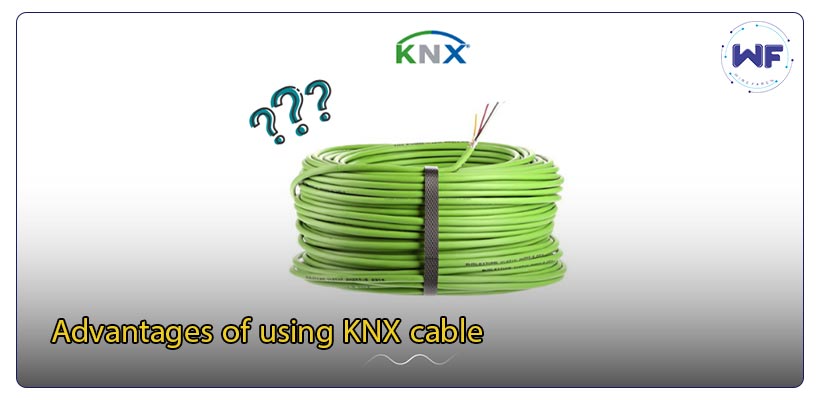In the realm of smart buildings and home automation, KNX (Konnectivity Network Exchange) technology has emerged as a widely recognized standard. A crucial component of KNX systems is the KNX cable, which forms the backbone of the network infrastructure. This article aims to provide a comprehensive overview of KNX cables, their characteristics, and their significance in enabling seamless communication and control within smart buildings.
What is KNX Cable?
KNX cable is a specialized type of cable designed to transmit data and power within a KNX system. It serves as the physical medium for connecting various devices, such as sensors, actuators, and control panels, in an intelligent building automation network. KNX cables are engineered to meet specific requirements, ensuring reliable and interference-free communication.
Structure and Components:
KNX cables consist of multiple twisted pairs of copper conductors. These twisted pairs help minimize the effects of electromagnetic interference (EMI) and ensure data integrity. The most common KNX cable variants include two twisted pairs (TP1), four twisted pairs (TP4), and more advanced variants with additional shielding for enhanced performance in noisy environments.
Cable Specifications and Standards:
KNX cables are designed to meet strict technical standards to ensure compatibility and interoperability within KNX systems. The cable specifications include parameters such as conductor size, impedance, insulation material, and shielding. Compliance with these standards guarantees reliable data transmission and system performance.
Installation Considerations
Proper installation of KNX cables is essential for optimal performance and longevity of the system. When installing KNX cables, it is important to follow recommended guidelines, including cable routing, separation from power cables, and grounding techniques. Adhering to these guidelines helps minimize the risk of signal interference and ensures the system operates as intended.
Benefits of KNX Cable:
a. Reliable Communication: KNX cables provide a robust and stable connection, allowing seamless communication between devices within the KNX system.
b. Interference Immunity: The twisted pair design of KNX cables helps mitigate electromagnetic interference, ensuring reliable data transmission even in electrically noisy environments.
c. Scalability: KNX cables support a scalable network architecture, allowing for easy expansion and integration of new devices or functionalities into the existing system.
d. Energy Efficiency: KNX cables facilitate efficient power management by carrying both data and power, reducing the need for separate power cables and minimizing energy consumption.
Compatibility and Integration:
One of the significant advantages of KNX cables is their compatibility with a wide range of KNX devices from different manufacturers. This interoperability allows for flexible integration of various subsystems, such as lighting, heating, ventilation, and security, into a unified smart building automation system.
Advantages of using KNX cable
Certainly! Here are some additional details about the benefits of using KNX cable in smart building automation:
1. Reliable Communication:
KNX cables offer a high level of reliability in data transmission. They are designed to minimize signal interference and maintain stable communication between devices within the KNX system. The twisted pair design of the cables helps reduce electromagnetic interference, ensuring reliable and uninterrupted data transfer.
2. Interference Immunity:
KNX cables are built with shielding and twisted pair configurations that provide excellent immunity against electromagnetic interference (EMI). This feature is particularly important in buildings where various electronic devices and systems may generate electrical noise. By reducing the impact of EMI, KNX cables ensure consistent and accurate communication between devices.
3. Scalability:
KNX cables facilitate a scalable network architecture, allowing for easy expansion and integration of new devices or functionalities into the existing system. As the needs of a building evolve, additional devices and subsystems can be seamlessly incorporated into the KNX system using the same cable infrastructure. This scalability ensures flexibility and future-proofing for the building automation system.
4. Energy Efficiency:
KNX cables carry both data and power, enabling efficient power management within the system. By combining power and data transmission in a single cable, the need for separate power cables is reduced, resulting in less cable clutter and simplified installations. This not only saves space but also minimizes energy consumption and promotes energy efficiency throughout the building.
5. Compatibility and Integration:
KNX cables offer compatibility with a wide range of KNX devices from different manufacturers. This interoperability allows for seamless integration of various subsystems, such as lighting, heating, ventilation, security, and more. Building owners and integrators can select devices from different manufacturers that best meet their requirements, ensuring flexibility and freedom of choice.
6. Easy Maintenance and Troubleshooting:
KNX cables are designed to be durable and require minimal maintenance. In case of any issues, the structured nature of KNX systems simplifies troubleshooting and enables quick identification and resolution of problems. This reduces downtime and ensures the smooth operation of the building automation system.
7. Future-Proofing:
KNX cables and systems are built to meet international standards and are continuously evolving to keep up with technological advancements. This ensures that investments made in a KNX-based infrastructure remain relevant and adaptable to future upgrades and expansions, safeguarding the longevity and value of the system.
By leveraging the benefits of KNX cables, smart building automation systems can achieve enhanced reliability, seamless integration, improved energy efficiency, and scalability for future needs. These advantages contribute to the overall effectiveness and performance of the building automation system, providing greater comfort, convenience, and control for occupants while optimizing energy usage and reducing operational costs.
Conclusion:
KNX cables play a pivotal role in establishing a reliable and efficient infrastructure for intelligent building automation. By providing the necessary physical connectivity between devices, KNX cables enable seamless communication, control, and integration within the KNX system. Understanding the characteristics, specifications, and installation considerations of KNX cables is crucial for ensuring optimal performance and successful implementation of smart building automation solutions.



2 Responses
Great
Good luck